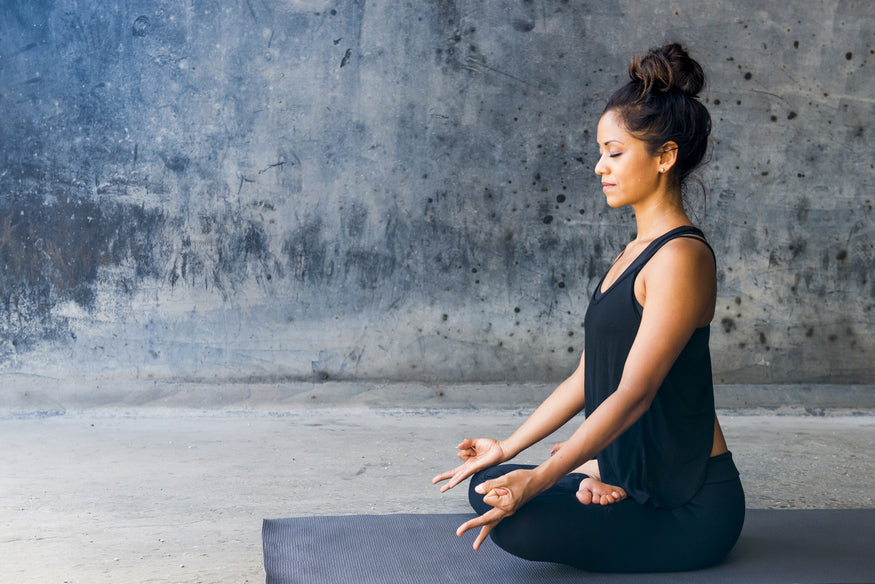Diaphragmatic Breathing

Share
Diaphragmatic Breathing: A Breathwork Practice for Reducing Stress and Anxiety
As we become more aware of the breathing process, it is necessary to learn how to breathe in the way that we are physiologically designed to. Most people are unaware of their breathing process, and habitually breathe short and shallow breaths into their upper chest area, receiving a very small amount of their lung’s air capacity. This short and shallow breath also stimulates the sympathetic nervous system, our bodies fight-or-flight response to stress. Because of this, cortisol—the stress hormone—is released into our bodies, and this taxes our adrenal glands, and negatively impacts our whole body.
Stress and Breathing
If this is our unconscious habit of breathing, which it is for most people, then we need to train ourselves to naturally breathe in a deep and relaxed way. Though this is generally a simple thing to do, for some it can be quite challenging. Because of the long habit of being stressed and breathing into the chest area, it can be difficult to direct the breath into our abdomen, which is the natural way for the body to breathe, which activates the parasympathetic nervous system, our rest-and-digest mode of being.
In fact, one cannot truly breathe into the abdomen unless they are relaxed. If we are tensed and anxious, the breath will continue to go into the chest area. Technically speaking, the breath does not actually go into the abdomen, but as our lungs fill with air, they push down on the diaphragm, which then extends our abdomen outward.
Breathing Leads to Relaxation
So, first and foremost, one must be able to breathe in a relaxed way. While this may be natural for some, it is very difficult for others. If we can’t breathe into our belly, it is because we are anxious, holding tension in our shoulders and upper body, and are not able to let go of that tension and relax.
Underlying every physical tension is a psychological/emotional tension. Simply put, if you can’t breathe in a deep and relaxed way, it’s because you aren’t relaxed. Why aren’t you relaxed? Because you are stressed in some way, you are angry or afraid, you are sad or in pain, and so you first have to acknowledge the emotions that are present within you. You have to be willing to look at them and accept them, to truly FEEL them—it is the only way to heal them, let them go, and allow for new states of being to emerge.
By breathing in a relaxed way, you let your body know one very important thing: that you are safe. You let your body know you are okay—that through all of the experiences you have had, through all of the things you go through on a daily basis, through all of the uncertainty of life, you are safe; you are okay. This is a deeply healing thing to feel if we allow ourselves to really do so on an actual level, and not merely from an intellectual level.
Many of us have been rushing through life, uncertain of what we are doing, stressing just to hold it together, constantly anxious and afraid. To take that one, deep and relaxed breath, we let our body know we are safe, that it is okay to relax and not live in a constant state of anxiety and defense. If we have never really done this, this simple act can be incredibly healing.
What is Diaphragmatic Breathing
This practice alone can bring up so many emotions, and it is helpful to feel them and express them. Cry if you must! Laugh if you must! Just let go of the tension and stress. Let yourself know you are safe and okay. Let yourself be relaxed. Affirm this with your very breath.
The practice of diaphragmatic breathing can teach us simply to breathe deeply in a relaxed way. As simple as this practice is, it is foundational for every other breathwork practice, and if we do not breathe in a relaxed way already, learning to do so can be a very healing process.
Diaphragmatic Breathing Benefits
Diaphragmatic breathing has numerous benefits for the mind and body:
- It helps you relax, lowering the harmful effects of the stress hormone cortisol on your body.
- It lowers your heartrate.
- It helps lower your blood pressure.
- It helps you cope with the symptoms of PTSD (Post-Traumatic Stress Disorder)
- It improves your core muscle stability.
- It improves your body’s ability to tolerate intense exercise.
- It lowers your chances of injuring or wearing out your muscles.
- It slows your rate of breathing so that it expends less energy.
Diaphragmatic Breathing Exercises
To practice diaphragmatic breathing:
- Sit in a comfortable position or lie flat on the floor, your bed, or another comfortable, flat surface.
- Relax your shoulders.
- Put a hand on your chest and a hand on your stomach.
- Breathe in through your nose for about three seconds. You should experience the air moving through your nostrils into your abdomen, making your stomach expand. During this type of breathing, make sure your stomach is moving outward while your chest remains relatively still.
- Press gently on your stomach, and exhale slowly for about three seconds.
- Repeat these steps several times for best results.